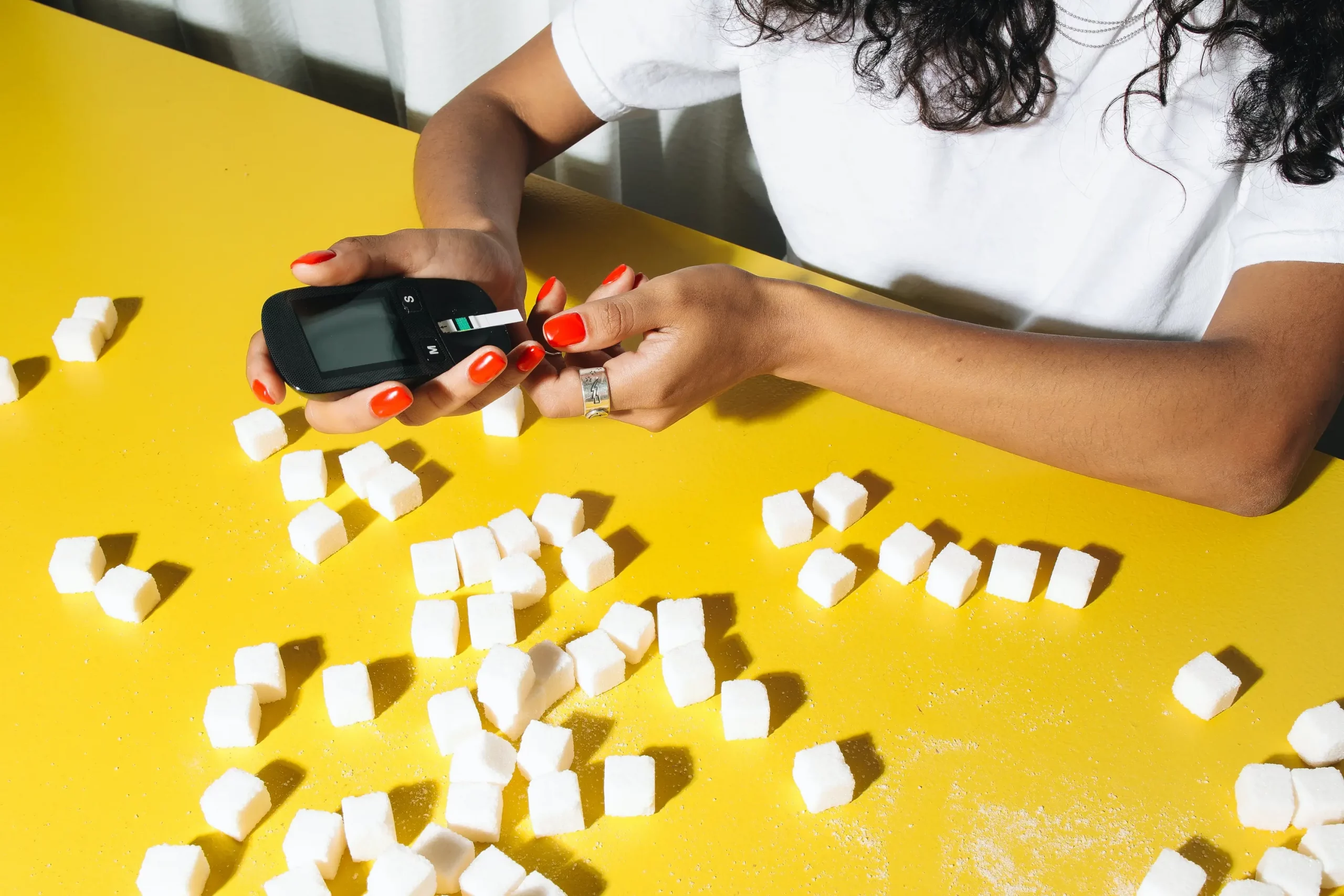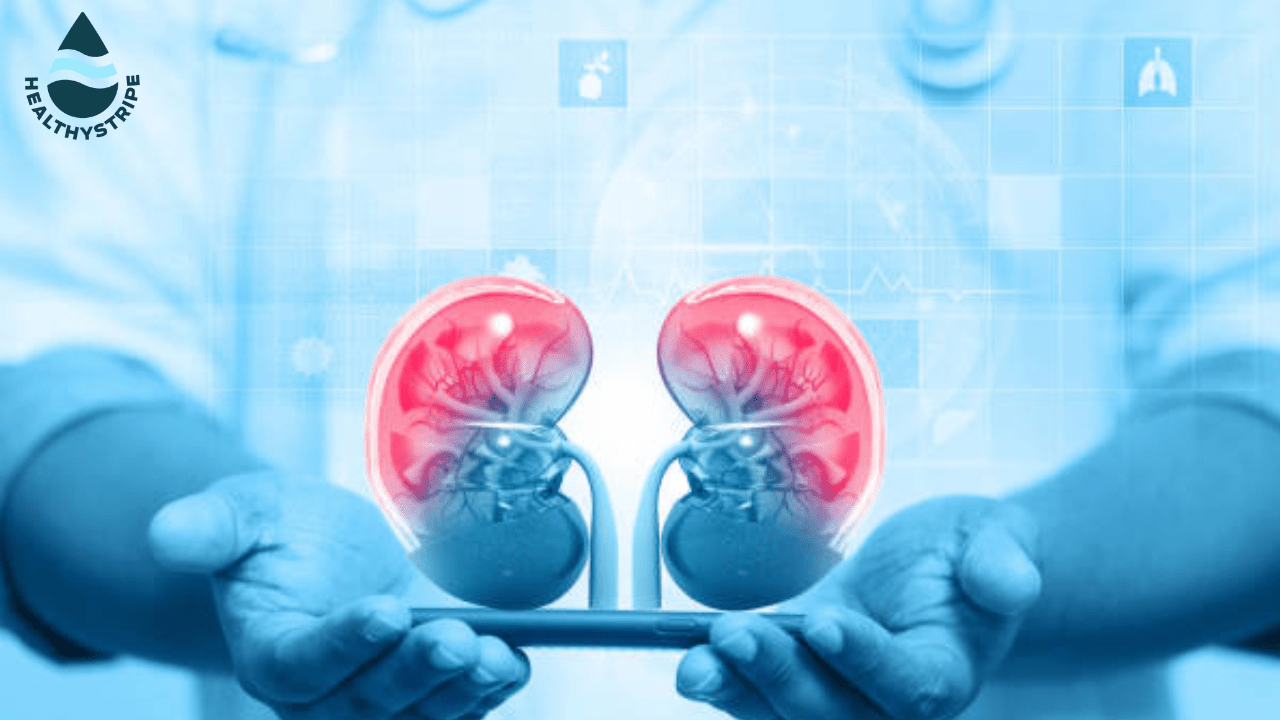Normal Blood Sugar Levels – Your Essential Guide

Whether it’s cooking a meal, watching Netflix or running a marathon, our bodies expend energy.
With its complex organ systems and the most groovy and wrinkled brain in the animal kingdom, the human body is a veritable furnace, guzzling fuel to ensure that this most exquisite meat skeleton that we occupy works without a hitch.
If we zoom in and look at these systems at a cellular level, it quickly becomes clear that almost every cellular process requires energy in the form of glucose.
Indeed, glucose, made available through the breakdown of carbohydrates and the glycolysis of fats (among other pathways), is the fuel currency of our body.
[lwptoc title=”Table of Contents”]
Normal Blood Sugar Levels in Healthy Individuals (Adults)
Our blood levels vary slightly over the course of the day depending on the level of physical activity and the time and contents of our last meal. Hormones such as insulin and glucagon also play a major role in blood glucose maintenance.
In a healthy adult, the normally observed blood glucose level is around 80-90 mg/dL when forgoing food for 3-4 hours. Anywhere in the range of 75-99 mg/dL is seen as healthy.
After a meal blood glucose levels rise and a range of 120-140 mg/dL is considered normal. With a healthy insulin response, these elevated levels return to the baseline after a couple of hours
How to Manage Blood Sugar Levels?
Managing our blood sugar levels is key. But why is it key?
Our bodies love homeostasis.
Homeostasis is a state in which various substances in our body are maintained within tightly controlled optimum ranges by various feedback loops.
Glucose is one of the most valuable substances in our body and hence managing blood sugar levels is essential. Too much or too little may swiftly become deadly.
Here are some simple yet effective ways to manage blood sugar levels-
- Track your blood glucose- Tracking your blood glucose levels regularly will keep you informed about the efficacy of all the other measures that we’ll be discussing
- Exercise- Engaging in physical exercise helps to maintain a healthy metabolism, increases insulin sensitivity and reduces your chances of contracting heart and nerve diseases. These are two dreaded long-term complications of diabetes. So working out keeps sugar levels within healthy ranges.
- Control How Much You Eat– It should come as no surprise that our diets play a massive role in maintaining blood sugar levels. Diabetes may be managed effectively by exercising portion control- being mindful of the quantity of food on your plate and how many calories you’re consuming. With proper portion control, you will be taking in just the right amount of food for sustenance without veering too far below or above the required levels.
- Control What You Eat- We live in an age of excess. Highly processed, delicious but nutrient sparse foods are cheaply and easily available. They come loaded with carbs and unhealthy fats without adequate proteins and micronutrients. Be intentional about cutting down on carbs, eating more whole foods, and getting plenty of fiber, minerals, and water.
- Control When You Eat- For Diabetics, extreme fluctuations in blood glucose levels may be deadly. The simplest way to prevent this? Treat yourself! Research has shown that frequent healthy snacking between meals coupled with smaller and more frequent meals helps to maintain blood glucose levels and even reduce the risk of developing type 2 diabetes.

Come on in for free!
Read, learn and become a better version of yourself by getting great trends on nutrition and wellness straight to your inbox.
Types of Diabetes
There are essentially four types of diabetes
- Type 1 Diabetes Mellitus- This occurs when the pancreas, whose job it is to secrete insulin, completely fails to do so. This type of diabetes is diagnosed at a relatively young age and occurs in 5-10% of the population
- Type 2 Diabetes Mellitus- This is the most common type of diabetes. In type 2 diabetes our pancreas produces less insulin than normal or the cells’ sensitivity to insulin is reduced. The age of onset was around middle age but has been steadily dropping for the past few decades.
- Gestational Diabetes- This is seen in pregnant women during their term and usually goes away after the baby is delivered. However, gestational diabetes increases the risk of frank diabetes developing later on in life for both the mother and the child.
- Pre-Diabetes- As the name suggests, pre-diabetes is when your blood sugar levels are elevated but not to a point where it might be diagnosed as frank diabetes. This is a warning sign and you should implement the previously stated steps to reduce your chances of developing full-blown diabetes.
Blood Sugar – Why Does it Matter in Diabetes?
Diabetes is a disease of hormone dysfunction. Glucose, as we discussed earlier, is needed by all the cells in our body. Due to derangements in insulin function, the body struggles to maintain the optimum blood glucose levels that it needs to function properly.
Because the glucose balancing mechanisms are disrupted, diabetics are prone to extreme swings in blood glucose levels.
Too little blood glucose is known as hypoglycemia.
Too much blood glucose is known as hyperglycemia.
Both these states may have serious, life-threatening consequences if not managed immediately.
The best way is to prevent these states from arising in the first place. So it becomes essential to monitor blood sugar levels in diabetes as it is a simple, reliable and easy-to-test metric of the body’s insulin response.
Blood Sugar Levels Chart for Adults with Diabetes
The chart below will give you an idea of the blood sugar levels that should be maintained by adults with diabetes
|
|||||||||||||||||||
Random Blood Sugar Test
There are several types of tests for diabetes but the simplest among them is the Random Blood Sugar test (RBS). This measures the blood glucose level at a random moment in time and does not require the person to have eaten a meal or fasted before the test. A result of more than 200mg/dl on an RBS test means that the person is diabetic
Symptoms & Diagnosis of High Blood Sugar Level (Hyperglycemia)
As discussed earlier both hyper and hypoglycemia may be life-threatening. So let’s learn the symptoms and diagnosis for both of these states.
The symptoms of hyperglycemia develop over a period of days to weeks of high blood glucose levels of 180-200 mg/dl. In long-term diabetics, blood glucose levels may shoot much higher before symptoms develop. Early on the symptoms are-
- Frequent urination
- Increased thirst
- Blurring of vision
- Feeling of weakness or fatigue
If not addressed in time hyperglycemia exacerbates and there is a build-up of chemicals known as ketone bodies in the blood that lead to a condition known as diabetic ketoacidosis. Symptoms include-
- Fruity-smelling breath due to toxic ketone bodies
- Dryness of mouth
- Abdominal pain
- Nausea and vomiting
- Difficulty in breathing and shortness of breath
- Confusion
- Loss of consciousness
Symptoms & Diagnosis of Low Blood Sugar Level (Hypoglycemia)
When blood sugar levels drop below 70mg/dl the condition is known as hypoglycemia. Hypoglycemia may precipitate rapidly after a hectic day or too high a dose of diabetes-controlling medication and must be dealt with immediately. The symptoms of hypoglycemia are-
The above three are the classic signs of hypoglycemia. Other symptoms include-
- Paleness
- Feelings of extreme weakness
- Hunger
- Increased heart rate or tachycardia
- Blurred vision
- Confusion
- Convulsions
- Loss of consciousness
- Coma in extreme situations
The last few symptoms occur due to a loss of glucose supply to the brain. The brain is extremely sensitive to reduced levels of glucose and this leads to the counterintuitive situation where low blood glucose is actually far more of a threat to diabetics than hyperglycemia.
When to See a Healthcare Provider
You should make it a rule to see your healthcare provider for a diabetic checkup every three months.
In addition to that visit your nearest hospital or doctor as soon as possible if you’re experiencing symptoms of hyper or hypoglycemia for an extended period of time.
Other reasons to visit a healthcare provider are
- Feeling numbness or pain in your extremities.
- Visit your dentist if you’re developing caries or gum disease
- Increased occurrence of infections such as oral thrush.
- Pain or bloating in the abdomen
- Breathless and pain in the chest
- Fruity-smelling urine or breath
- Blurring of vision
Conclusion
Diabetes has rightly been called the Silent Killer of the modern era and affects billions of people worldwide. With more and more of us becoming susceptible to this disease, it may seem like a scary scenario.
Fret not! With the right knowledge and by undergoing some simple lifestyle tweaks there is growing evidence that diabetes may be prevented, controlled and even reversed. Meanwhile, research continues apace to find the exact mechanisms of the disease and develop novel treatments for it. Don’t let diabetes hold you back from living your best life.
Normal Blood Sugar Levels Related FAQs
Here are the answers to some frequently asked questions
What blood sugar level requires insulin?
Insulin therapy is best started when HbA1c is greater than 10%.
What is the random blood sugar level?
The random blood sugar range varies between 70-100 mg/dL.
Do tomatoes raise blood sugar levels?
Tomatoes have a minimal effect on blood sugar levels as they are carb sparse.
What is a normal blood sugar level for a child?
Normal blood sugar levels for a child are 70-150 mg/dL
Does walking reduce blood sugar levels?
Walking is a great physical activity as it gently stimulates your cardiovascular system, aids in digestion, improves mood and increases insulin sensitivity. This makes it a great option for managing blood sugar levels.







